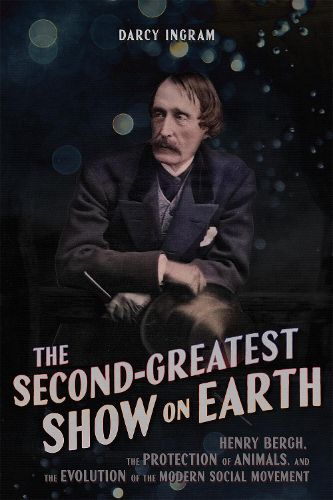Readings Newsletter
Become a Readings Member to make your shopping experience even easier.
Sign in or sign up for free!
You’re not far away from qualifying for FREE standard shipping within Australia
You’ve qualified for FREE standard shipping within Australia
The cart is loading…






In 1865, wealthy American expatriate Henry Bergh (1813-1888) chose suddenly to abandon a life of leisure in Europe. Returning to his home city of New York, he set to work on what soon proved a remarkable accomplishment: the establishment of an institutional framework for the animal protection movement in America.
What makes that accomplishment all the more remarkable, Darcy Ingram argues, is what brought Bergh to it in the first place. Surprisingly, it had little to do with animals. Through a diverse array of sources, The Second-Greatest Show on Earth reveals that Bergh's motivation for establishing the American Society for the Protection of Cruelty to Animals was not an extraordinary compassion for animals but rather by his understanding of himself and his place in the world. Uniting his authoritarian principles, his long-thwarted literary and theatrical ambitions, and an unfulfilled sense of civic duty, the animal protection movement occupied him for the rest of his life. In the process, the elitist, enigmatic, and oftentimes irascible ASPCA president became something of a celebrity and proved despite constant ridicule to be an innovative social movement tactician well attuned to the changes that were unfolding around him.
Grounded in discussions of cultural capital, dramaturgy, and modernity, The Second-Greatest Show on Earth presents a striking analysis of motivation, leadership, and identity in the development of the modern social movement.
$9.00 standard shipping within Australia
FREE standard shipping within Australia for orders over $100.00
Express & International shipping calculated at checkout
In 1865, wealthy American expatriate Henry Bergh (1813-1888) chose suddenly to abandon a life of leisure in Europe. Returning to his home city of New York, he set to work on what soon proved a remarkable accomplishment: the establishment of an institutional framework for the animal protection movement in America.
What makes that accomplishment all the more remarkable, Darcy Ingram argues, is what brought Bergh to it in the first place. Surprisingly, it had little to do with animals. Through a diverse array of sources, The Second-Greatest Show on Earth reveals that Bergh's motivation for establishing the American Society for the Protection of Cruelty to Animals was not an extraordinary compassion for animals but rather by his understanding of himself and his place in the world. Uniting his authoritarian principles, his long-thwarted literary and theatrical ambitions, and an unfulfilled sense of civic duty, the animal protection movement occupied him for the rest of his life. In the process, the elitist, enigmatic, and oftentimes irascible ASPCA president became something of a celebrity and proved despite constant ridicule to be an innovative social movement tactician well attuned to the changes that were unfolding around him.
Grounded in discussions of cultural capital, dramaturgy, and modernity, The Second-Greatest Show on Earth presents a striking analysis of motivation, leadership, and identity in the development of the modern social movement.